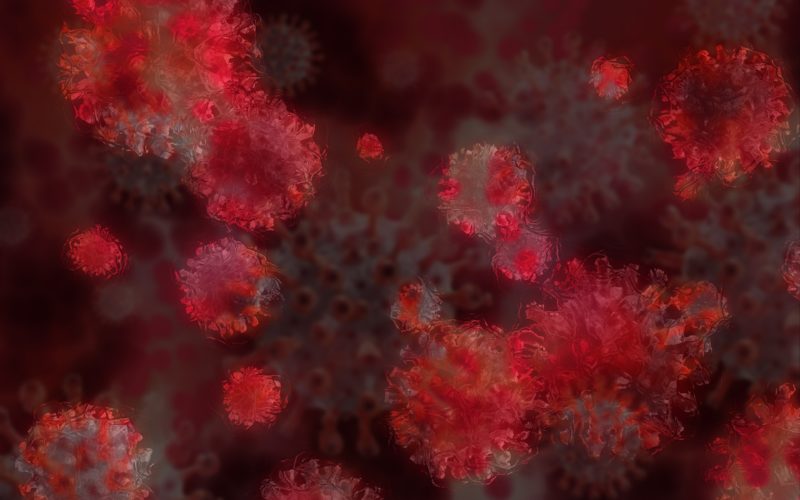Application of the second dose of vaccines against COVID-19 Thus, initiation of boosters was necessary to reduce disease lethality by more than four times in the Federal District over five waves of contamination, each with a predominance of a SARS-CoV- variant. This is what the last one refers to Special Epidemiological Bulletinreleased this week by the Department of Health of the Federal District (SES).
Again, immunization is clearly the most effective measure against COVID-19. Therefore, we will continue with the goal of expanding vaccination coverage to all ages, with actions outside the walls, on weekends, in schools and other places where a large number of people flock,” says Portfolio Manager Lucilyn Florencio.
According to the survey, the lethality rate of COVID-19 decreased from 4.24%, in March 2021, to 1.7% in June of the same year. During this period, the vaccination entered the second dose phase. The same phenomenon was repeated after the application of the first booster dose, in September 2021, when the death rate was 1.74%, and it decreased to 0.41% in December of that year.
In this delicate equation, vaccination measures, with more than 80 service locations per workday, have been dominant in reducing covid-19 deaths in DF. This is a trend that can be seen in any situation: an increase in vaccination leads to a decrease in the death rate. Over time, booster doses are given specifically to reduce the lethality rate. When it starts to stabilize, a new booster dose is applied and it goes down again,” explains the nurse from the team at Strategic Information Center on Health Surveillance of the Federal District (Cievs)Joao Pedro Angelesi Virginio.
According to the data provided, the most deadly of the five COVID-19 contamination waves in DF was the second, between January and June 2021, when there were 49,452 cases and 2,095 deaths in March. The fourth and fifth waves, both in the first half of 2022, had more than double the number of cases, but without a commensurate increase in the death rate.
Although the analysis showed that each wave was characterized by a different variable, each with different characteristics, the data by age group confirm the hypothesis that the decrease in mortality is related to the vaccination campaign. “We see that the age group that is vaccinated has a decrease in mortality and severity, and that progresses by age group, as vaccination progresses,” he adds.
Among the elderly aged 80 or over, for example, the death rate fell from 2,382.25 deaths per 100,000 residents in the first wave, when there was no vaccination, to 177.07 in the fifth wave, in June 2022, which is when the vaccination application. The second reinforcement has already occurred. Meanwhile, the under-two mortality rate has stabilized at 1.14 from the first to the fifth waves. For children, immunization began in November 2022.
The Special Epidemiological Bulletin also provides information that the age groups with the highest rate of COVID-19 cases and deaths, in all five waves, were people between the ages of 30 and 59 or over 80. For the general population, of all age groups, the death rate decreased from 202.83 deaths per 100,000 men in the second wave to 4.16 deaths per 100,000 men in the fifth wave. Among women, this index decreased from 141.95 in the second wave to 4.67 in the fifth wave.
reinforcement
SES Director of Epidemiological Surveillance Fabiano dos Anjos adds that the document focuses on bringing new knowledge about the effects of COVID-19 in various areas of public health, from increasing assistance for victims of domestic violence to the importance of testing for sexually transmitted diseases (STIs). “We’ve had people who come to hospital doors with COVID-19 and they have HIV/AIDS, without even knowing it,” says the epidemiologist.
The experience of dealing with COVID-19 has also led to a series of improvements for both management and planning of family mobilization and resource management, as well as for monitoring the diseases themselves. During the pandemic, Cievs has begun to make heavy use of digital tools, such as data fusion and analysis software. “Technological tools are here to stay. Epidemiological surveillance is no longer done without systems analysts,” Fabiano reveals.
These teachings are also valid for the final confrontation with new waves of COVID-19 or other diseases that may affect public health services. “The experience of COVID-19 has greatly increased the capacity of the team. We had a much faster and more timely response, for example, due to Monkeypox [uma doença viral em que a transmissão pode ocorrer por meio do contato com o animal ou com o humano infectado]with the preparation of support materials and contingency plans,” completes Cievs Director Priscilleyne dos Reis.
current data
As of the 24th, SES has confirmed 807,486 cases of COVID-19 among the population of the Sahel region, with 10,830 deaths, a death rate of 1.34%. Between June 17 and June 24, there were 138 cases and a transmission rate of 0.81, indicating a slowdown in the number of cases.
a vaccination campaign Exceeded 7.7 million applied doses in DF, with 455,000 of the new bivalent version, currently available to persons at least 18 years of age.
Vaccination coverage exceeds 81% for the first dose, and peaks at 99.2% for the population over 80 years of age. However, in the case of the booster dose, which is available to everyone five years of age or older, 48.1% of the population has not yet been vaccinated. The bivalent booster reached 49.7% for those over 80 years of age, and it decreased to less than 16% for people under 49 years of age.
Each week, SES Epidemiological bulletins related to covid-19, where the number of cases, deaths, infection, transmission, and death rates are assessed.

“Wannabe internet buff. Future teen idol. Hardcore zombie guru. Gamer. Avid creator. Entrepreneur. Bacon ninja.”

